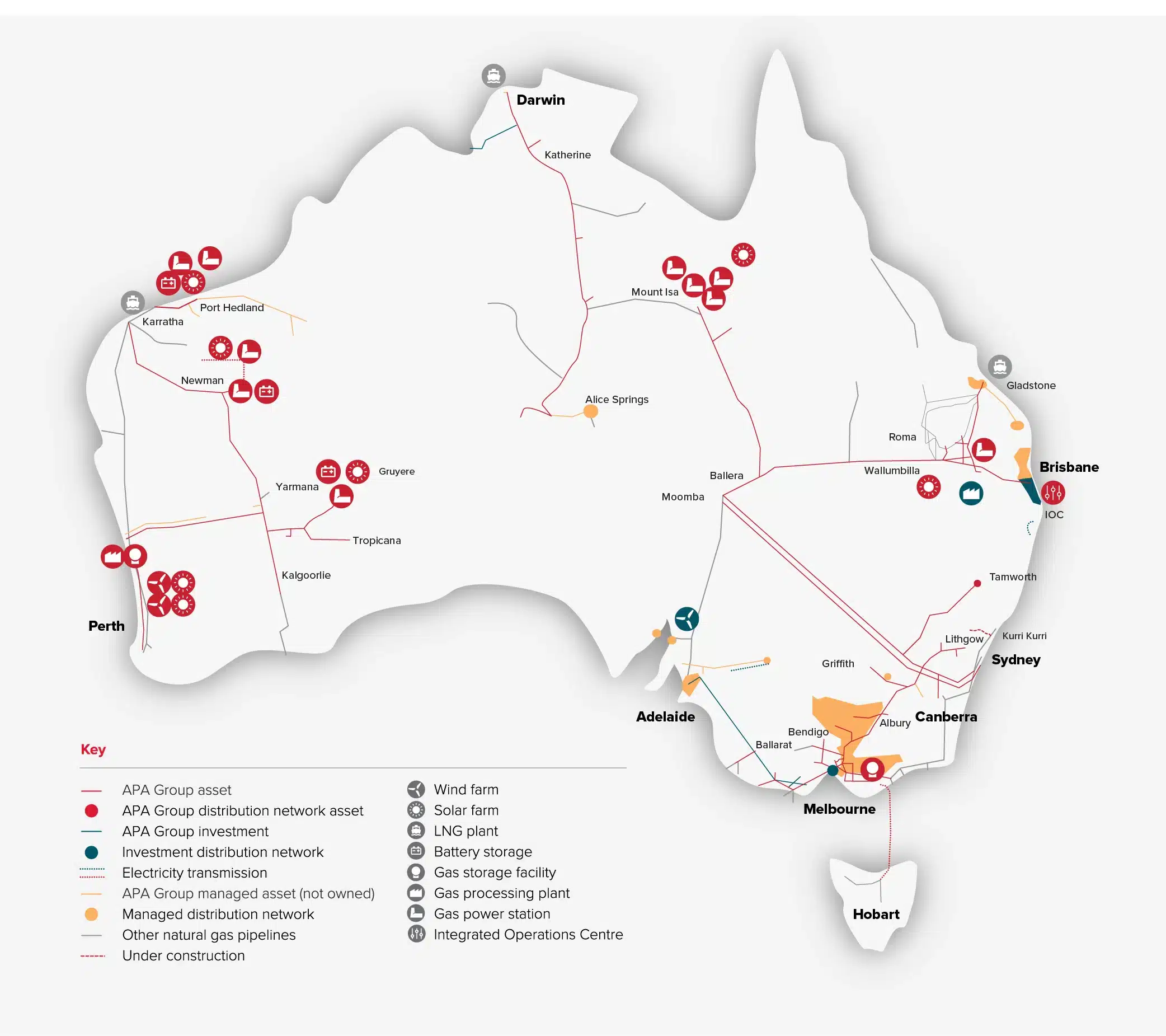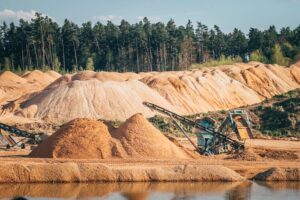APA Group (ASX:APA): Does it deserve to have declined like its peers in 2023?
Nick Sundich, December 11, 2023
APA Group (ASX:APA) has declined by over 20% in CY23. On one hand, it is understandable as it is in a heavily capital intensive business and has significant requirements in the year ahead. But the other, it is not, given it is not just any infrastructure business, it is a gas pipeline owner.
All about APA Group
This company began when it was spun out of AGL over 2 decades ago, when it was the division of AGL that owned the gas pipelines. APA’s network spans 15,000km across Australia and claims to deliver half of the nation’s natural gas usage.
The company also operates gas storage and processing facilities, other power stations and even renewable energy facilities. APA also has investments in other private energy companies. It also has more than 600km of high voltage power transmission lines, storage for 12,000 tonnes of LNG and 18 petajoules of gas, as well as 29,500 gas mains and pipelines for more than 1.4 million customers. On the generation side, it is one of Australia’s biggest renewable energy generators, with 342MW of wind power and 248MW of solar.

APA Group (ASX:APA) network (Source: Company)
Trying to reach Renewable Energy targets
You would think APA Group would have a major role to play in decarbonisation as a gas pipeline operator and renewable energy player. Gas has less carbon intensity and can back up renewable energy when necessary. After all, Australia has a goal of 82% renewable energy by 2030, which means emissions will need to decline by 43% from 2005 levels.
Despite this goal, there’s doubts it can be achieved. Looking to the industry generally, multiple factors are delaying the transition, including slow planning approvals, NIMBYs community opposition and rising costs (not least of which is interest rates but also skilled labour).
Dividends not really growing much
Looking to APA, it has spent a lot of money recently on new acquisitions and will continue to face high capex. It bought $1.7bn for Alinta Energy’s off-grid power generation assets in WA and is bidding to build renewable energy zones.
Although it has not cut dividends, it has not grown them substantially and this has disappointed investors who expect constant dividend growth from top 50 companies. And when you consider the new shares being issued to pay for new acquisitions, this will further dilute investors.
Walking a fine tightrope
But…you know what they say. Short term pain for long term gain. This is exactly what the company is intending. The buy of Alinta was huge, because it now has exposure to a major market opportunity in WA’s Pilbara region. The major miners are investing in the cleaning up from their operations, but this is difficult when it is away from established electricity grid infrastructure.
Through the existing Pilbara Pipeline System, APA Group can generate power off-grid by replacing coal and diesel with renewables and gas. It has estimated there is a total market opportunity of $25bn that it can capture. Nonetheless, capital allocation will be easier said than done. It still intends to pay dividends, with a goal of 60-70% of free cash flow. But of course, this is not necessarily profit and may leave some investors disappointed in the next couple of years.
No guidance given
It has not given formal revenue guidance, but told investors to expect full year contributions from certain assets only owned for part of FY23, such as Basslink which bought $29m to the kitty despite only being owned for 8 months. And the good news is that the majority of fixed revenue is indexed to inflation.
It has told investors to expect returns in excess of its post-tax WACC, although this is a figure that can fluctuate. The average cost of debt is 4.98% on an annualised basis and the average maturity is 5 years, although the total maturity spans out to FY36.
Is there upside?
Analysts covering the company think so, but not much. The mean target price is $9.10, up only 6% from the current share price. Consensus estimates for FY24 expect 10% revenue growth, but an 8% retreat in its profit. For FY25, more revenue growth with 8% growth as well as 9% revenue growth. However, at the EPS line, FY25 estimates are flat compared to FY23.
We’ve had our own attempt at a DCF model for APA. We will not put a succinct figure, because it is highly volatile dependant on capex and terminal growth assumptions, not to mention debt and equity financing assumptions.
The bottom line
Another risk with this company is the prospect of industrial accidents. One example is driving, that accounts for 33% of the company’s potential serious harm events. Nonetheless, the company’s vehicles drove 15m kilometres in FY23 for 4.3m hours with zero fatalities or serious injuries. The company recently launched a new Driver Awareness Campaign, aimed at promoting safe driving practices. Finally, we note that interest rates remaining higher for longer will inevitably continue to impact the company.
Ultimately, we wouldn’t invest in the company at the moment, at least not until there’s somewhat more certainty of its capex and debt requirements.
What are the Best ASX Stocks to invest in right now?
Check our buy/sell tips
Blog Categories
Get Our Top 5 ASX Stocks for FY25
Recent Posts
Is the S&P 500 Really Doomed to a ‘Lost Decade’? Goldman Sachs thinks so, but will it eventuate?
The term ‘Lost Decade’ gets thrown about a lot, but most recently to the next decade to the S&P 500.…
Halloween Stocks: Here are 5 ASX Stocks that Will Benefit from Halloween
Here are 5 ASX Halloween Stocks! The Reject Shop (ASX:TRS) The Reject Shop is one of Australia’s most notable…
Here’s Why ASX Mineral Sands Stocks Are Gaining Momentum & Our Top 2 Picks
Mineral sands are naturally occurring materials that are made up of heavy minerals like zircon, ilmenite, rutile, and more. These…



